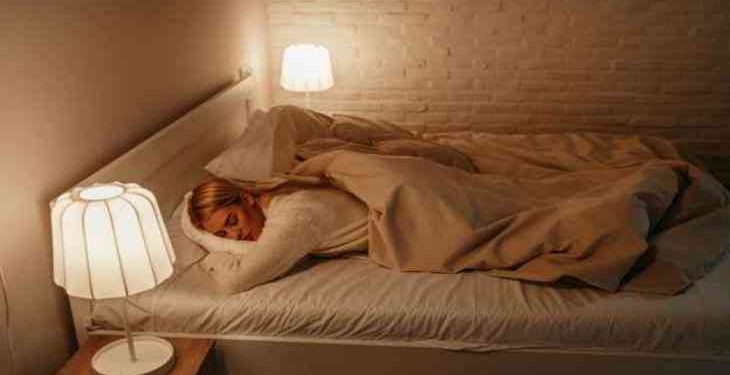Washington: Sleeping with a television or light on in the room may lead to weight gain or obesity in women, a study has found.
The research, published in the journal JAMA Internal Medicine, is the first to find an association between any exposure to artificial light at night while sleeping and weight gain in women.
The results suggest that cutting off lights at bedtime could reduce women’s chances of becoming obese. The researchers from the US National Institutes of Health used questionnaire data from 43,722 women in the Sister Study, which examines risk factors for breast cancer and other diseases.
The participants, aged 35-74 years, had no history of cancer or cardiovascular disease and were not shift workers, daytime sleepers, or pregnant when the study began. The study questionnaire asked whether the women slept with no light, a small nightlight, light outside of the room, or a light or television on in the room.
The scientists used weight, height, waist and hip circumference, and body mass index measurements taken at baseline, as well as self-reported information on weight at baseline and follow-up five years later. Using this information, the scientists were able to study obesity and weight gain in women exposed to artificial light at night with women who reported sleeping in dark rooms.
The results varied with the level of artificial light at night exposure. For example, using a small nightlight was not associated with weight gain, whereas women who slept with a light or television on were 17 per cent more likely to have gained five kilogrammes, approximately 11 pounds, or more over the follow-up period.
The association with having light coming from outside the room was more modest. Also, the scientists wondered if not getting enough rest factored into the findings. “Although poor sleep by itself was associated with obesity and weight gain, it did not explain the associations between exposure to artificial light while sleeping and weight,” said Dale Sandler, from the National Institute of Environmental Health Sciences (NIEHS), part of NIH.
Chandra Jackson of NIEHS noted that for many who live in urban environments, light at night is more common and should be considered. Streetlights, store front neon signs, and other light sources can suppress the sleep hormone melatonin and the natural 24-hour light-dark cycle of circadian rhythms.






































